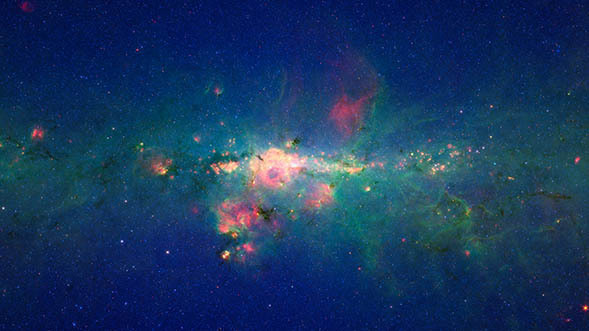
Following the resounding success of the Infrared Astronomical Satellite (IRAS) mission and the increasing eagerness of the astronomical community for a follow-up observatory, a report was commissioned to recommend the most important new ground- and space-based missions for the decade of the 1990s.
The resulting report, called the Bahcall report, was published in 1991. It referred to the 1990s as "the decade of the infrared", and listed that an infrared space telescope be "the highest priority for a major new program in space-based astronomy" for the next decade. This telescope would eventually become NASA's Spitzer Space Telescope.
In a comparison with the other highest-rated infrared facilities being proposed (SOFIA and Gemini), the report described Spitzer as follows:
"[Spitzer] has the highest sensitivity for photometry, for imaging, and for low- to moderate-resolution spectroscopy. Between 3 and 20 microns, [Spitzer] will be 10 to 40 times more sensitive than the infrared-optimized 8-m telescope [Gemini]. Despite advances in ground-based telescope design and detector technology, [Spitzer] will maintain fundamental advantages in sensitivity longward of 3 microns. [Spitzer] will also have the uninterrupted spectral coverage from 2 to 200 microns needed to detect important molecular and atomic spectral features."
Shortly after the publication of the Bahcall report, however, NASA's budget was dramatically revised. This led to the cancellation of some planned missions, and the re-design of many more, Spitzer included. Spitzer underwent two massive revisions in just five years, changing from a massive observatory with development costs in excess of 2.2 billion dollars to a modest-sized (but still powerful) telescope, with costs of less than 0.5 billion dollars.
An independent report on the redesign, released in April 1994, concluded that "...despite reductions in scientific scope that have resulted from NASA's current cost ceiling for new science missions, Spitzer remains unparalleled in its potential for addressing the major questions of modern astrophysics highlighted...in the Bahcall Report. The TGSS is unanimous in its opinion that Spitzer still merits the high-priority ranking it received in the Bahcall Report."
A significant factor in maintaining the scientific integrity of Spitzer, despite the budget cuts and dramatic redesign, was a series of clever and innovative engineering decisions, including a warm-launch, and a unique choice of orbit.



